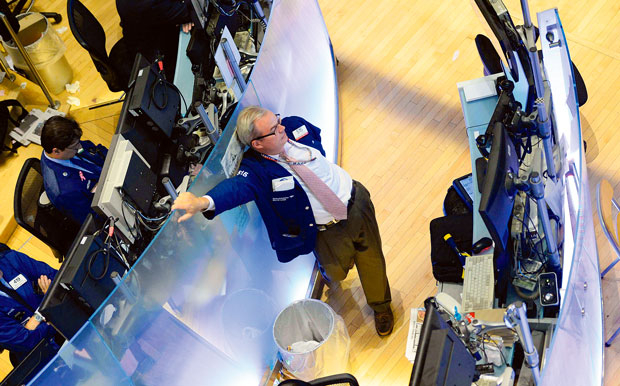
DUBAI: The S&P500 index peaked at 2019 for a few minutes after the September 19 launch of the Alibaba IPO. Since then US and global stocks have plunged nearly 10 per cent and the 10-year Treasury yield slumped below 2 per cent, oil prices are in free-fall and despite some recovery volatility has surged across asset classes.
Global economy is facing probably the biggest crisis of confidence since the European sovereign crisis and the great global financial meltdown following the fall of Lehman Brothers.
While the US economic growth is showing signs of fatigue, Japan and the Europe are throwing up fresh signs of weakness and emerging markets such as China are dragging instead of driving growth.
Geopolitical tensions in the Middle East and Ukraine, protests in Hong Kong and the potential spread of the Ebola outbreak to more parts of the world is exacerbating investor worries across the world.
Global growth worries have taken heavy toll on most asset classes across the world with global equities taking the maximum impact in recent weeks.
“The recent meltdown is driven by a growth shock (via Europe and energy markets) and fear of falling fearnings rather than fear of higher rates,” said Michael Hartnett, Chief Investment Strategist of Bank of America Merrill Lynch.
Earlier this month the International Monetary Fund (IMF) cut its global growth forecasts for 2014 and 2015 and warned that the world economy may never return to the pace of expansion seen before the financial crisis.
The IMF said it expected global growth to be 3.3 per cent in 2014, 0.4 points lower than it was predicting in the April World Economic Outlook (WEO) and 0.1 points down on interim forecasts made in July. A pickup in the rate of expansion to 3.8 per cent is forecast for 2015, down from 3.9 per cent in the April WEO and 4 per cent in July.
“The pace of global recovery has disappointed in recent years”, the IMF said, noting that since 2010 it had been consistently forced to revise down its forecasts. “With weaker-than-expected global growth for the first half of 2014 and increased downside risks, the projected pickup in growth may again fail to materialise or fall short of expectation.”
The IMF’s economic counsellor, Olivier Blanchard, said the three main short-term risks were that financial markets were too complacent about the future; tensions between Russia and Ukraine and in the Middle East; and that a triple-dip recession in the Eurozone could lead to deflation.
“The combination of underwhelming global confidence data, a slow-moving ECB and heightened disinflation risks has weighed on sentiment. Concerning remarks by Fed officials and the IMF have added to the discomfort,” said Gustavo Reis, New York-based Global Economist at Bank of America Merrill Lynch.
According to him, amid the generalised risk-off mood, a few themes stand out. First, growth worries are primarily centred on the euro area. Second, the reassessment of disinflation risks in light of a stronger dollar and lower oil prices. ON a contrarian argument, investors are seen buying pain and selling pleasure with some recovery seen in stock and oil prices, but most analysts view asset classes such emerging markets equities., commodities, resources, small-cap and European cyclicals and expected to remain highly volatile.
Rate tantrum
Some economists say the deflation risks have risen in the largest economies such as Europe, UK and Japan although it is relatively low in the US. Although the IMF believes the US Federal Reserve and the Bank of England will be the first two major central banks to start raising interest rates by the middle of 2015, it advised that official borrowing costs should be kept low so long as demand remained weak.
Analysts in general believe that the Fed will not be able to normalise interest rates because the economy cannot withstand the resulting financial shock. Until recently, the main concern was a potential shock to interest-sensitive sectors of the economy such as housing.
Federal Reserve officials last week took stock of a slowdown in the global economy and said it could delay an increase in US interest rates. Fed vice-chairman Stanley Fischer said the effort to finally normalise US monetary policy after years of extraordinary stimulus may be hampered by the global outlook.












